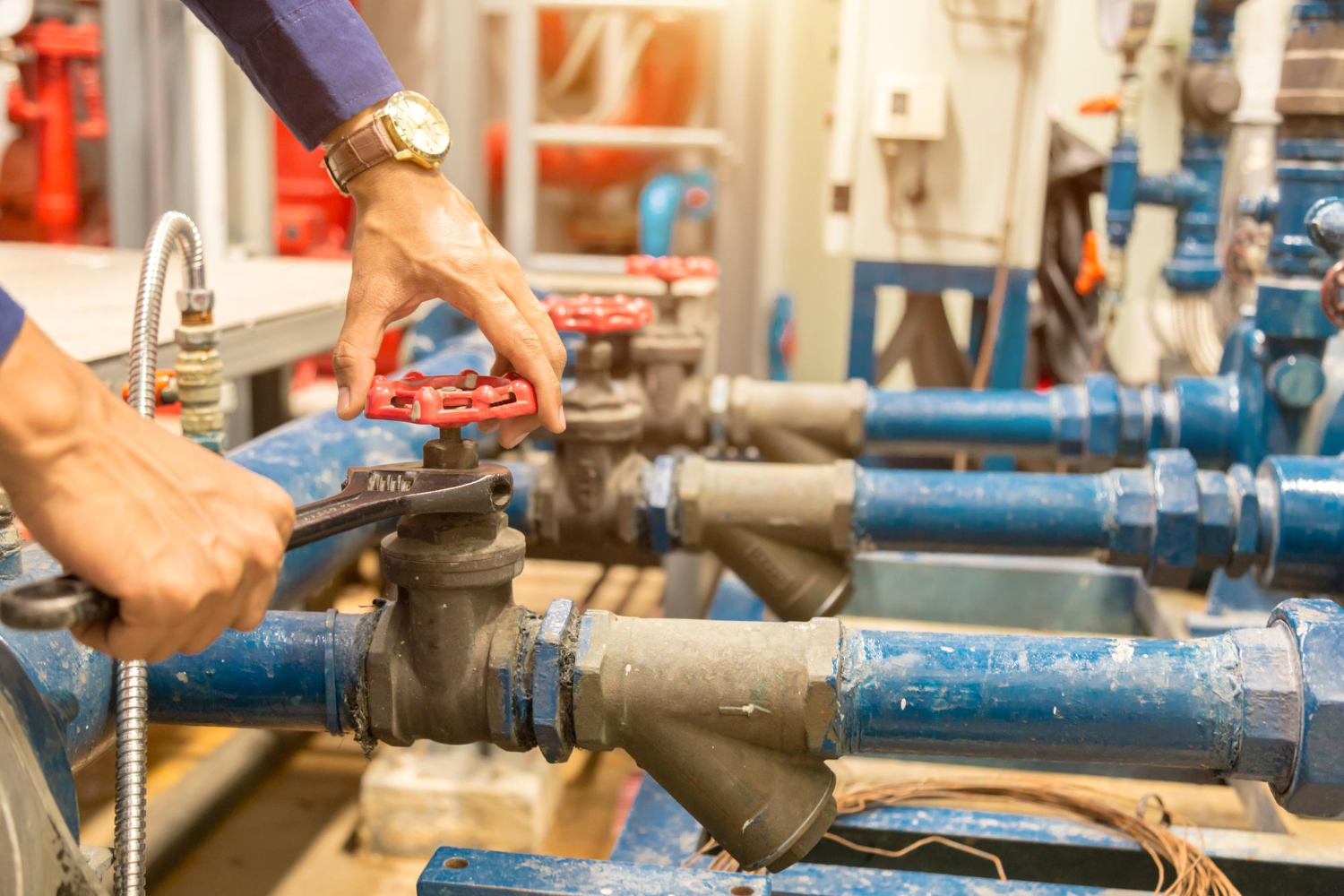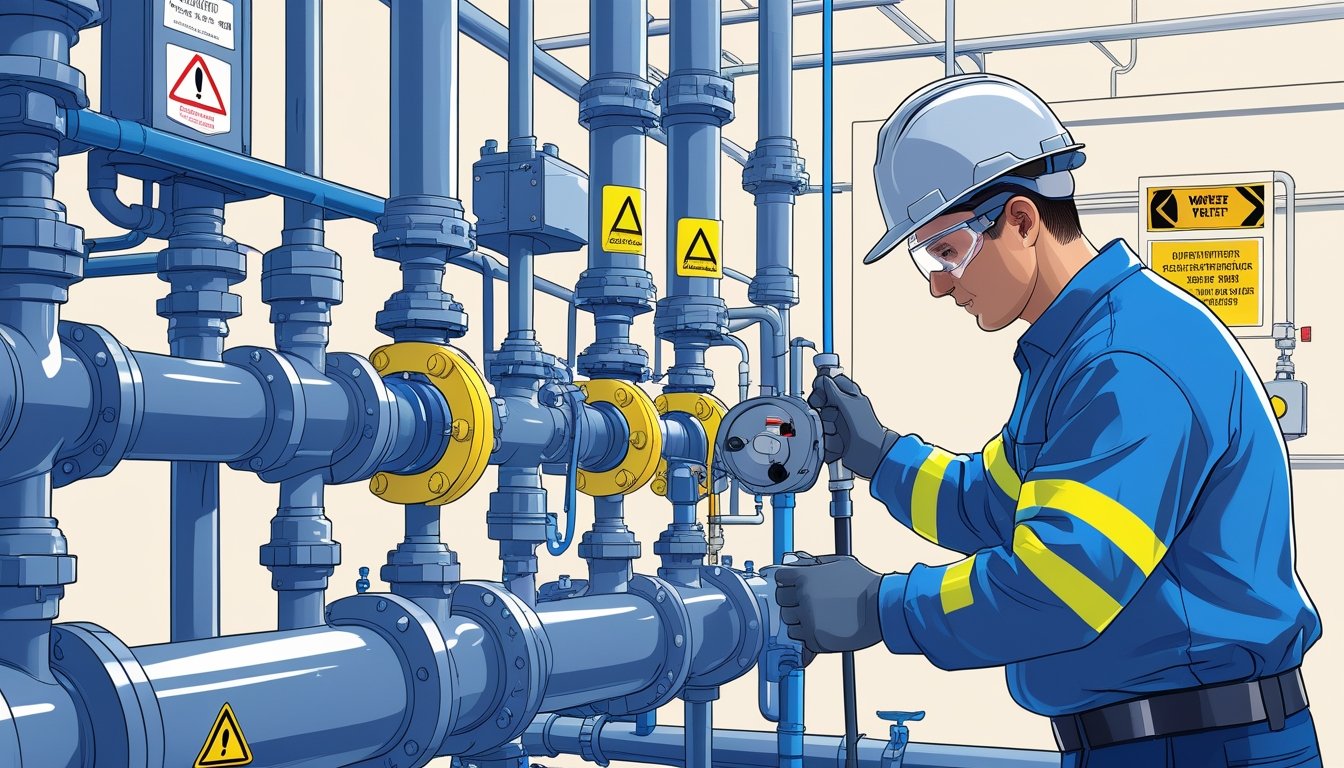Keeping our backflow preventer calibration IS key to ensuring it works correctly and protects our water supply. Over time, the tools we use to test the device can lose accuracy due to regular use and environmental factors. If the test kit isn’t calibrated right, we risk missing problems that could lead to water contamination or costly repairs.
Regular calibration helps us trust the test results and meet local safety regulations. It also prevents unexpected system failures and keeps our plumbing running smoothly. Understanding why calibration matters encourages us to stay on top of maintenance and avoid trouble before it starts.
In this article, you’ll learn how backflow preventer calibration ensures safe water and regulatory compliance.
Through the topics below, you’ll learn when calibration is required, how it’s performed, and who should handle the process:
- What backflow preventer calibration actually means
- How often backflow gauges and devices need calibration
- Who should handle backflow preventer calibration
- Consequences of poor calibration or skipped service
- Pacific Backflow’s trusted calibration services
By checking calibration regularly, we make sure our backflow preventer truly does its job. This small step supports safer water and peace of mind for everyone relying on our system.
What backflow preventer calibration actually means
Backflow preventer calibration ensures the tools used to test these devices are accurate. This process directly affects water safety and the reliability of test results. Calibrating the test gauge helps avoid errors that could lead to contamination or system failures.
The role of accurate testing in water safety
Accurate testing is essential to keep our water safe. Backflow preventers stop dirty water from flowing back into clean water supplies. If tests on these devices aren't accurate, problems might go unnoticed.
Incorrect readings can cause us to miss signs of backflow risk. This puts public health in danger because contaminated water might enter drinking supplies. Trustworthy testing keeps contamination risks low and water safe for everyone.
How calibration impacts test reliability
Calibration is the process of adjusting the backflow test gauge to ensure correct readings. Over time, gauges can drift or lose precision due to frequent use and environmental conditions like pressure changes.
EPA guidance emphasizes that all backflow test gauges (including pressure gauges, hoses, and valves) must undergo certification and calibration at least once per year to produce reliable test results.
When we calibrate regularly, usually once a year, the test results remain reliable. Without calibration, even minor errors can lead to false passes or failures, causing costly repairs or unsafe conditions. Regular calibration maintains the trustworthiness of backflow preventer inspections.
Why backflow test gauge calibration is required
Backflow test gauges have parts like needle valves, hoses, and differential pressure gauges that all need precise adjustment. Calibration checks these components and corrects any deviations.
Many states and municipalities legally require annual calibration. This ensures backflow prevention devices meet safety standards. Calibration also supports certification processes, proving our equipment works as expected and complies with water safety regulations.
How often backflow gauges and devices need calibration
Regular calibration of backflow gauges and devices is essential to keep testing accurate and protect our water supply. Knowing when and why to calibrate helps us stay compliant and avoid risky errors. We need to watch for industry guidelines, signs of miscalibration, and local rules to schedule the right checks.
Industry standards for testing frequency
Most industry standards require backflow test kits and gauges to be calibrated at least once a year. This annual calibration helps maintain accuracy within strict limits, often within ±0.2 PSI. Devices exposed to heavy use or harsh environments may need calibration more often.
Proper calibration ensures the valve and other parts give reliable results when testing backflow prevention devices. Certified technicians usually handle this service to meet official accuracy levels.
If a device fails a test or shows signs of wear, immediate calibration or repair is necessary. Staying ahead of the schedule reduces risks of contamination due to faulty equipment.
Signs your gauge or valve may be miscalibrated
There are clear signs that our backflow test kit could be off calibration. If readings jump inconsistently or don't match expected pressures, that’s a warning. Physical damage like leaking, broken parts, or stuck valves also suggests the device needs checking.
If test results don’t line up with previous reports or other equipment’s readings, we should suspect miscalibration. Delays in calibration after heavy use or exposure to extreme pressure can cause inaccuracies.
Keeping an eye on these signs helps us avoid false readings, which can leave plumbing systems unprotected or trigger unnecessary repairs.
Local compliance timelines you shouldn’t miss
Local regulations usually dictate when we must have backflow prevention devices and gauges calibrated and tested. Most municipalities require annual certification and may have stricter rules depending on the system’s size and risk level.
Skipping or delaying calibration risks fines or water safety violations. Compliance often means working with licensed testers who document calibration dates and results.
It’s important we check local water authority or municipal rules regularly. Meeting their timelines not only keeps us legal but safeguards the public water supply from contamination.
Who should handle backflow preventer calibration
Proper calibration of your backflow preventer requires specialized skills and equipment. It is important to rely on trained professionals who understand the technical details and legal requirements. Knowing what to expect from a calibration service and how to select the right company helps us protect our water systems effectively.
Why certified technicians are essential
Certified technicians have the training needed to perform accurate calibration. They understand how to work with complex test kits and can identify issues that may affect backflow prevention. Without proper certification, important errors can go unnoticed, putting water safety at risk.
These technicians also stay updated on local and state regulations. Many areas require calibration to be performed by a certified professional to avoid fines or compliance problems. Their expertise ensures our backflow preventers meet these standards every time.
What to expect from a calibration service visit
During a calibration service visit, the technician will first inspect the test kit and its components. They will check hoses, gauges, and valves to ensure everything functions correctly. If the kit is off, they adjust or replace parts to restore accuracy.
The technician tests the backflow preventer using the calibrated kit to verify it works properly. They provide detailed reports documenting the results and any repairs. This service usually takes a short time but is crucial to maintain water safety.
Choosing a backflow preventer calibration company you trust
When selecting a calibration company, we look for certifications and proven experience. A trusted company provides clear pricing, fast turnaround, and warranty on their service or parts. Reviews and recommendations from local water authorities can help us find reliable options.
We should also confirm they follow industry standards and legal requirements. Good communication and availability for future service also matter. Choosing the right company helps ensure our backflow preventer calibration is accurate and compliant with all rules.
Consequences of poor calibration or skipped service
Failing to calibrate our backflow preventers regularly can cause several serious problems. It can lead to inaccurate test results, which hide device failures. This increases the risk of fines from authorities and puts our water supply at risk of contamination.
How it leads to inaccurate backflow readings
Backflow test kits measure pressure differences to ensure preventers work correctly. Over time, wear and environmental factors can cause the gauge to drift. Without recalibration, this drift causes false readings.
According to EPA’s Cross-Connection Control Manual, reduced pressure backflow preventers and similar assemblies must be tested semi‑annually by certified testers.
Inaccurate readings might show the device is working when it is not. This means backflow preventer failures can go unnoticed. If pressure changes are not detected, contaminated water could flow back into our clean water supply.
Regular calibration resets the test kit to factory standards. This helps maintain accurate pressure readings and reliable test results every time we check our system.
Risk of fines and failed inspections
Many local rules require annual testing of backflow preventers by certified technicians. If we skip calibration, tests may yield invalid or incorrect data, leading to failed inspections.
Failed inspections can trigger fines or enforcement actions. Some municipalities charge penalties that increase with repeated violations. These fines add costs to our maintenance budget and may delay needed repairs.
Keeping calibration up to date ensures compliance with laws and smooth inspections. It also helps us document proof that we are properly maintaining our plumbing system.
Threats to your property’s water supply integrity
Backflow preventers keep dirty water from entering our potable water lines. When calibration is poor or skipped, the device’s true condition is hidden. A faulty preventer can let contaminants flow backward.
This contamination risks health by exposing us to bacteria, chemicals, or other pollutants. It can also cause property damage if contaminated water spreads through plumbing.
Maintaining calibration ensures we detect and fix any failures quickly. This protects the safety and quality of the water on our property and avoids costly damage.
Pacific Backflow’s trusted calibration services
We ensure your backflow preventers are calibrated accurately to keep your water supply safe and compliant. Our experts handle every step from testing to paperwork, so you stay up to date with local rules and avoid costly issues.
On-staff backflow preventer calibration technicians
Our team includes certified technicians trained specifically in backflow preventer calibration. They use precise tools to check pressure and valve function. This helps confirm your devices work correctly to prevent contaminated water from mixing with clean water.
Each technician follows state and local standards to make sure calibration meets all legal requirements. We handle all brands and sizes of backflow preventers. Having experts in-house means faster service and consistent quality control.
Timely reminders and compliance tracking
We keep track of your backflow preventer’s calibration schedule. Our system sends you reminders before tests are due, so you never miss an important deadline. Staying on schedule with testing avoids fines and protects your water system.
Our compliance tracking also records past services and results. This allows us to monitor trends and alert you if any devices need early attention. We help you stay organized and compliant without extra work on your end.
Full Documentation filed with local water authorities
After calibrations, we prepare all necessary documentation. These official reports confirm your backflow devices passed testing and meet regulations. We then file the paperwork directly with your local water authority.
This process guarantees your records are complete and accepted by the authorities. Handling filings for you simplifies regulatory compliance and protects your property from unexpected penalties. We keep copies on file for your reference and future audits.
Conclusion
We must keep our backflow preventer calibration checked regularly to ensure the device works accurately. Over time, wear and environmental factors can cause the test kit to lose precision. This can lead to unreliable test results, which affects the safety of our water supply.
Maintaining calibration helps us comply with local regulations. Many areas require annual testing by certified professionals. By following these rules, we protect public health and avoid possible fines or penalties.
We can think of backflow preventer calibration as a key step in water safety. Proper calibration ensures correct pressure readings and valve function. This lets us catch any problems early before they lead to contamination.
By taking these actions, we support reliable water protection and meet legal standards without guesswork. It’s a basic but important part of managing water safety for our homes and businesses.
Schedule your backflow preventer calibration with a Pacific Backflow to stay compliant and protect your water supply.











